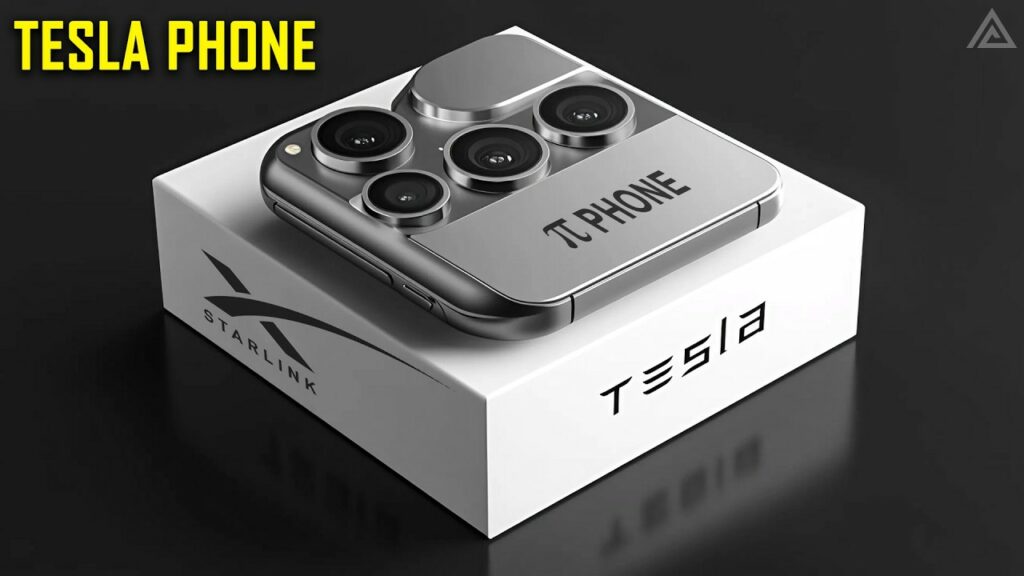In a landmark announcement that could reshape the future of mobile technology, Elon Musk has officially introduced the Tesla Pi Phone 2025, a device designed to integrate directly with Starlink 3.0, and poised to challenge the long-standing dominance of Apple and Samsung. The phone’s advanced features, aggressive pricing, and futuristic capabilities are already generating massive buzz—and scrutiny.

A Satellite-Powered Smartphone, No Cell Towers Required
At the heart of the Tesla Pi Phone lies native integration with Starlink 3.0, the latest iteration of Musk’s satellite internet system. Instead of relying on traditional cellular towers, the Pi Phone connects directly to over 4,400 low-Earth-orbit satellites, enabling seamless coverage across the globe—from remote mountains to open oceans.

Starlink 3.0 offers:
-
Speeds of up to 330 Mbps
-
Latency as low as 18–20 milliseconds
-
An improved deorbiting protocol to reduce space debris
This leap in global connectivity could render legacy mobile carriers obsolete and marks a major pivot toward SIM-free, borderless communication.
Disruptive Pricing: $379
Perhaps the most jaw-dropping detail is the price tag. At just $379, the Tesla Pi Phone dramatically undercuts flagship models from Apple and Samsung. With no need for carrier plans thanks to Starlink, users could save over $1,300 annually by eliminating mobile network fees.
Industry analysts say Musk’s pricing strategy isn’t just aggressive—it’s designed to trigger a shift toward low-cost, high-function satellite devices.
Integrated xAI: A New Standard in Artificial Intelligence
Beyond connectivity, the Tesla Pi Phone aims to redefine mobile intelligence through integration with xAI, Musk’s AI venture. Backed by a $700 million investment into a dedicated data center in Atlanta, powered by Nvidia GPUs, xAI is expected to deliver AI performance far beyond anything seen in today’s market.

Reported AI capabilities include:
-
Real-time recognition of 4,000+ objects
-
Lightning-fast response speeds (65–80 ms)
-
Smart power optimization
-
Deep camera and media enhancements
-
Intuitive, behavior-based interface personalization
With xAI, Tesla’s assistant could offer a context-aware, deeply adaptive user experience—challenging the dominance of Apple’s Siri and Google Assistant.
Brainwave Authentication: A Leap into Neural Security
In a more controversial twist, Musk may be preparing to introduce brainwave-based authentication via Neuralink technology. Early reports suggest the Pi Phone will feature non-invasive EEG sensors that detect neural signatures—enabling users to unlock their phones with thought alone.
If implemented, the system would offer:
-
A false acceptance rate as low as 1 in 10 million
-
Seamless operation in challenging environments
-
A potential replacement for both fingerprint and facial recognition
While this feature has yet to be fully confirmed, it reflects Musk’s ongoing ambition to merge biology and technology in everyday life.
Rethinking the Smartphone: Disruption or Revolution?

As the global smartphone market braces for impact, the Tesla Pi Phone represents more than a new product—it’s a philosophical reimagining of what mobile technology can be. With its:
-
Satellite-native design
-
AI-first ecosystem
-
Brain-computer interface potential
-
Sub-$400 price point
Tesla is clearly aiming to redefine baseline expectations for smartphone performance, connectivity, and utility.
Final Thoughts: Are Consumers Ready for the Post-SIM Era?
With the Pi Phone’s official unveiling, Musk is betting big on a future where traditional carriers are irrelevant, AI is essential, and brain-computer interfaces are mainstream. It’s a risky move—but one aligned with Musk’s track record of transforming stagnant industries.
The only question now: Are consumers ready for a phone that does more than keep up—one that leaps ahead?